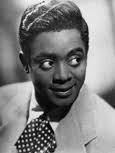Lon Chaney and Dr. Bunny Briggs did not invent the paddle and roll, but instead developed the step to its maximum potential.
 There are four elements to the paddle and roll: a dig, a back brush of the ball of the foot, stepping on the ball of the foot, and a heel. The “paddle” constitutes the dig and the brush, while the roll is the action of dropping the toe and heel in a smooth and controlled motion.
There are four elements to the paddle and roll: a dig, a back brush of the ball of the foot, stepping on the ball of the foot, and a heel. The “paddle” constitutes the dig and the brush, while the roll is the action of dropping the toe and heel in a smooth and controlled motion.
Other names for the paddle and roll include the drumming term paradiddles and the gangster-inspired Tommy Gun.
Some say that the paddle and roll originated in the Midwest as an answer to the East coast style of dancing, and dancer/choreographer Buddy Bradley owes the step to the Flamenco style of dancing. Regardless of its origin, the paddle and roll has become one of the most popular tap steps and is often the first step that comes to mind when students are asked at random to show off some steps.
To say that any tap dancer is king of the paddle and roll may land you in hot water.
There have been plenty of contenders for that title. The first man to proclaim himself master of the paddle and roll was Walter Green, a tap dancer who had arrived in New York from Chicago in 1937. Green put out a challenge to all dancers that no one would be able to best his superior foot technique, the paddle and roll. Local tough guys Ralph Brown, Freddie James, Albert Gibson, and Chuck Green set him straight.
No other dancer is identified more with the paddle and roll than another tap icon, Lon Chaney.
A short, stout man, Lon Chaney danced into the floor, and his rippling paddle and roll variations created quick, staccato tapping combined with bold phrases of rhythm. At the end of tap dance performances, it is not uncommon for the tap dancers to form the so-called “Chaney track” or the “Hoofer’s Line”; at the climax of the show, the dancers form a line and rattle off a long stream of paddle and rolls. Each performer takes a small solo accompanied by the steady call and response chanting of “Ho-yeah, Ho-yeah, Ho-yeah, Ho-yeeaaahhh!” Needless to say, most tap dancers hold Lon Chaney in the highest regard.
(Hoofer’s Line beginning at 1:12. Lon Chaney – farthest Stage Left)
Bunny Briggs is the antithesis of Lon Chaney; Briggs is slender, doe-eyed, and dances his signature paddle and roll style by lightly smattering a string of bop-inspired, staccato rhythms. Peppered with comedic body gestures, these lampoon popular dance vernacular of the ‘30s, ‘40s, ‘50s and ‘60s.
Bunny Briggs’ style of dancing, in contrast to Lon Chaney’s chunky rhythmic phrasing, sounds more akin to a Dizzy Gillespie melody sped up double time, which is no accident. Commenting on his time working as a singer and dancer in Earl Hines’ band, “Both Dizzy Gillespie and Charlie Parker were in that band, and it helped me work out my own style of paddle and roll,” says Briggs.
Bunny Briggs worked with the cream of the jazz world, with musicians like Charles “Luckey” Roberts and Erskine Hawkins. But to me and many others, it was his work with Duke Ellington, and in particular the piece David Danced before the Lord with All His Might as part of a series of sacred music concerts that Ellington toured across the country, that was a stand out example of Bunny Briggs’ style and ear for musicality.
(Bunny Briggs: The most Super-Leviathonic Rhythmaturgical Syncopated Tapstamaticianisimist)
Tristan Bruns has studied the art form of tap dance with Donna Johnson, Ted Levy, Lane Alexander and Martin “Tre” Dumas and has a BA in Music from Columbia College Chicago. Tristan has been an ensemble member of such Chicago tap companies as BAM!, The Cartier Collective and MADD Rhythms. Tristan currently produces his own work through his company, TapMan Productions, LLC, which includes the performance ensemble The Tapmen and the tap and guitar “band” of The Condescending Heroes.


